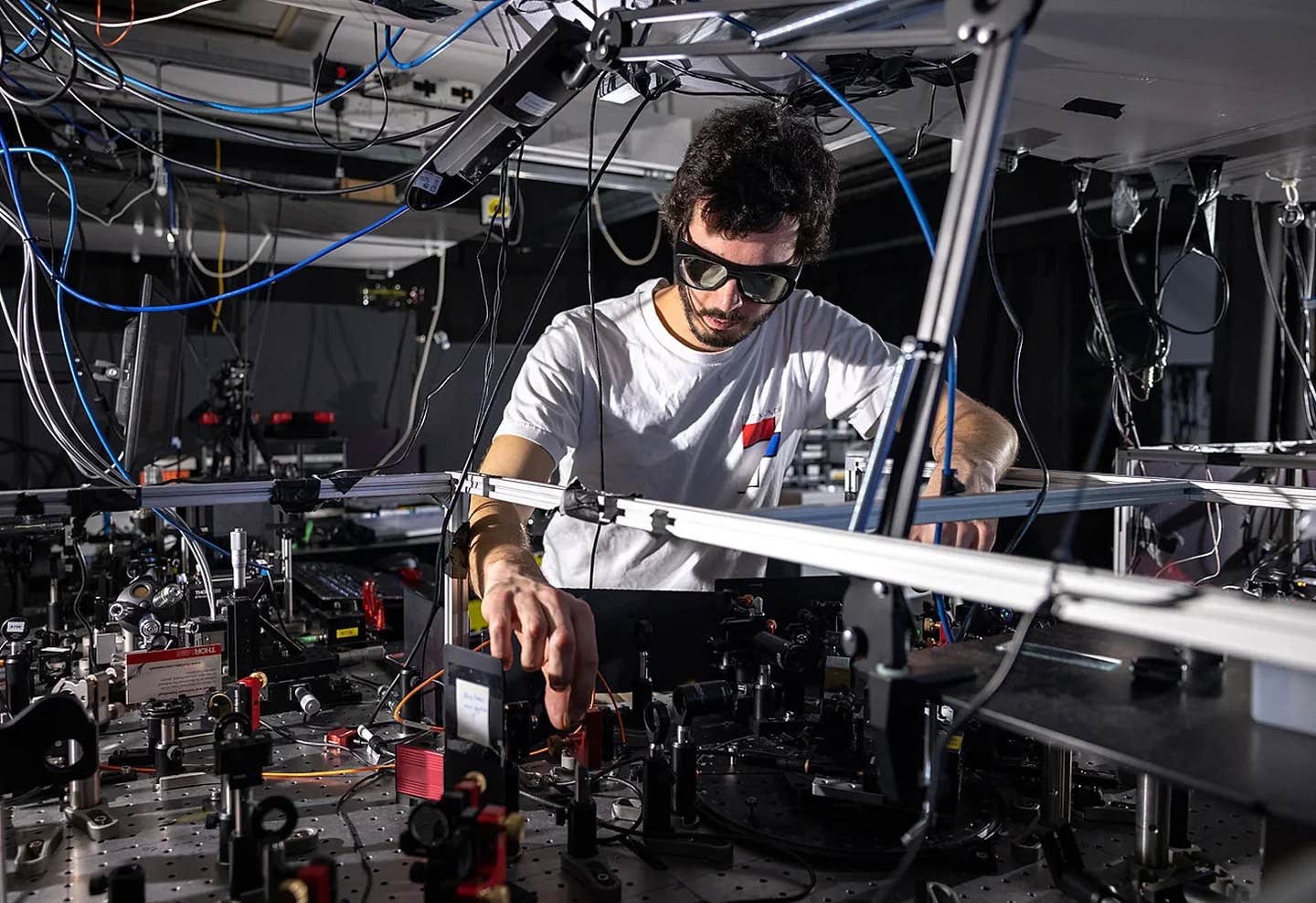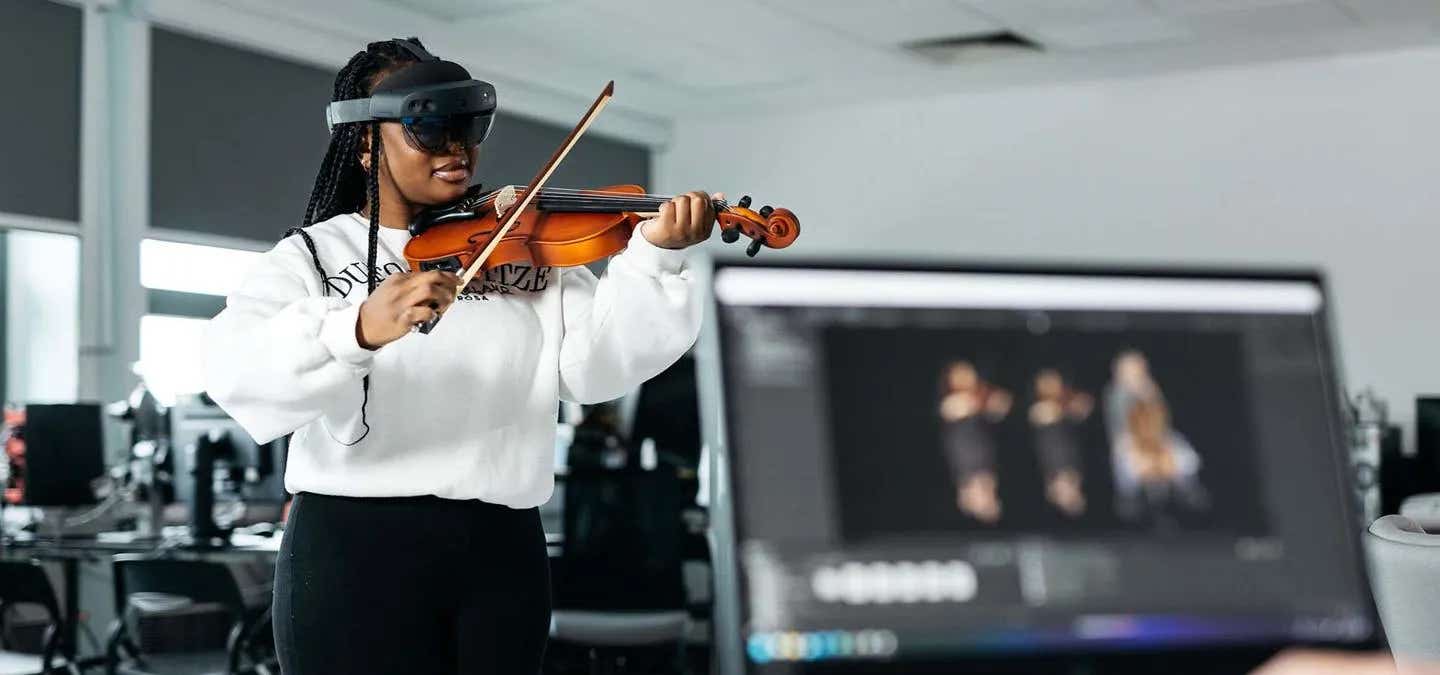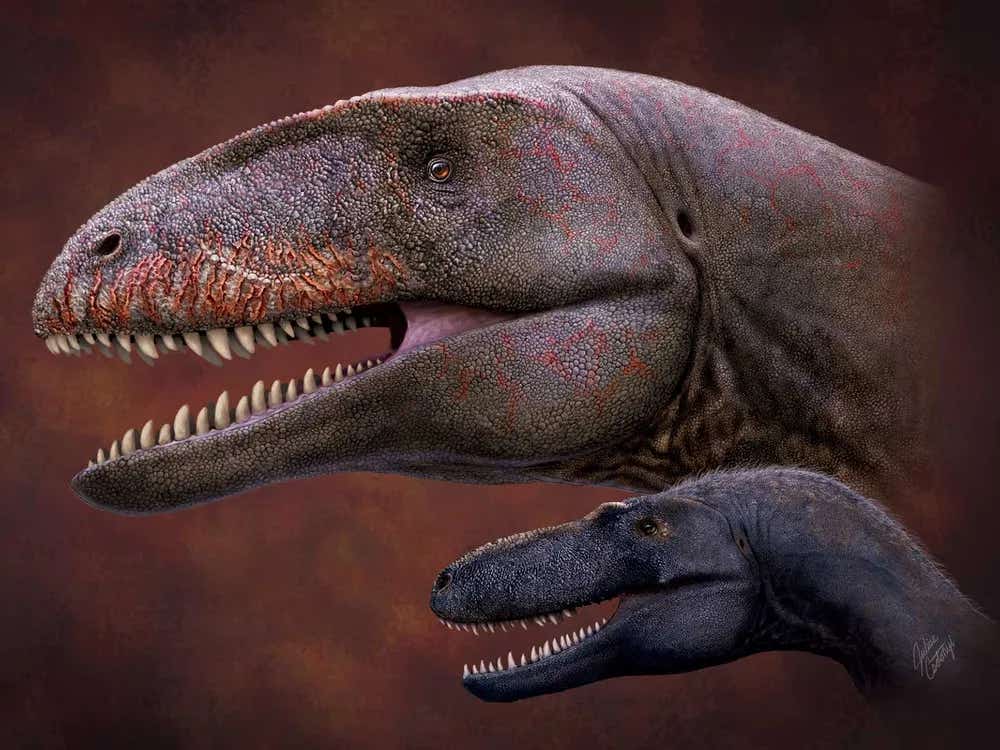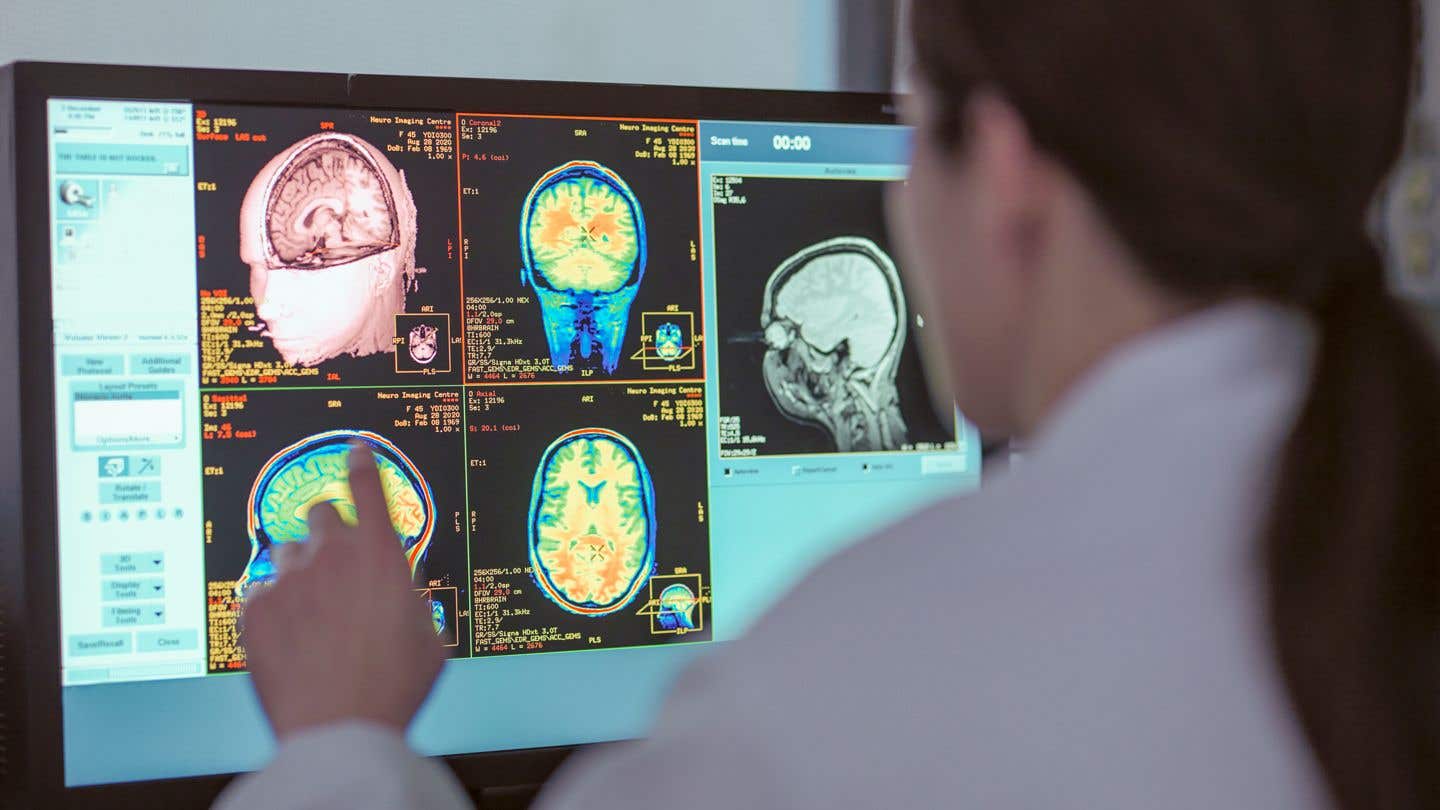Breakthrough quantum physics experiment proves light travels in both space and time
Scientists offer groundbreaking insights into light, paving the way for innovations in telecommunications, computing, and medicine.

Imperial physicists have recreated the famous double-slit experiment, which showed light behaving as particles and a wave, in time rather than space. (CREDIT: ICL)
A groundbreaking achievement by physicists from Imperial College London has brought new insights into quantum physics by recreating the famous double-slit experiment in the dimension of time. Led by Professor Riccardo Sapienza from the Department of Physics, this research team explored how light interacts with a material whose optical properties can change within a few femtoseconds, revealing more about the fundamental nature of light.
The original double-slit experiment, first performed in 1801 by Thomas Young, showed that light behaves as a wave. Later experiments demonstrated that light also behaves as particles, revealing its quantum nature. In this classic experiment, light was passed through two physical slits, creating an interference pattern that displayed light’s wave properties. This experiment became crucial in understanding not just light but also the quantum behavior of particles like electrons and atoms.
This new experiment alters the classic version by focusing on changes in the frequency of light, rather than its direction. The researchers used lasers to manipulate the optical properties of a thin film of indium-tin-oxide, the material commonly found in mobile phone screens. By changing its reflectivity with femtosecond precision, the team was able to alter the light’s color and produce an interference-like pattern from different colors of light interacting with each other.
Published in Nature Physics, this experiment, as Sapienza notes, "reveals more about the fundamental nature of light while serving as a stepping-stone to creating the ultimate materials that can minutely control light in both space and time." These materials could significantly advance technologies in fields ranging from telecommunications to medicine.
One of the major breakthroughs from this experiment is the potential for creating new spectroscopies that can resolve the temporal structure of light pulses. Co-author Professor Sir John Pendry said, "The double time slits experiment opens the door to a whole new spectroscopy capable of resolving the temporal structure of a light pulse on the scale of one period of the radiation."
These findings are not just a step forward in quantum physics but could lead to transformative applications in various industries. For example, telecommunications could benefit from new optical switches that can handle faster, more reliable data transmission. By controlling the timing and frequency of light with greater precision, this technology might one day enable faster internet speeds and more efficient communication networks.
Related Stories
In computing, the development of metamaterials that control light could result in optical processors that are faster and more energy-efficient than traditional electronic processors.
Optical computing, where light replaces electricity, has long been a goal for researchers because it promises higher data processing speeds with less energy consumption. Such technology could revolutionize computing by making devices more powerful while reducing their environmental impact.
Medical technology is another field that stands to benefit from these discoveries. Light’s potential to be precisely controlled in both space and time could lead to more advanced imaging tools for diagnostics and treatment. This might allow for earlier detection of diseases or the ability to precisely target and destroy cancer cells without harming surrounding tissue, reducing side effects in treatments like chemotherapy.
The experiment also lays the foundation for further research into "time crystals," which are materials that have repeating structures not just in space but also in time.
According to co-author Professor Stefan Maier, "The concept of time crystals has the potential to lead to ultrafast, parallelized optical switches." These time crystals might help researchers achieve even more refined control over light, opening new avenues for technological advancement.
The significance of this experiment extends beyond telecommunications, computing, and medicine. Metamaterials like the ones used in this research could have broader applications in industries such as energy, transportation, aerospace, and defense.
For instance, controlling light at such a fine level might enable more efficient energy systems or advanced sensor technologies for aircraft and vehicles. Even black hole physics could be explored through these new quantum experiments, adding to the wide-ranging impact of this research.
As technology advances, the role of metamaterials and quantum physics will become increasingly critical. The ability to manipulate light in space and time holds the promise of reshaping how we interact with the world, offering faster, more efficient, and more precise tools across industries.
This breakthrough by the Imperial College London team marks a significant leap in that direction, showing how curiosity-driven research can lead to innovations that ripple through many fields.
As Professor Sapienza stated, this experiment is just the beginning: "Our work serves as a stepping-stone to creating the ultimate materials." With further exploration, these innovations could lead to entirely new ways of understanding and controlling light, providing tools that change everything from the devices in our pockets to the way we diagnose and treat diseases.
Note: Materials provided above by The Brighter Side of News. Content may be edited for style and length.
Like these kind of feel good stories? Get The Brighter Side of News' newsletter.
Joseph Shavit
Head Science News Writer | Communicating Innovation & Discovery
Based in Los Angeles, Joseph Shavit is an accomplished science journalist, head science news writer and co-founder at The Brighter Side of News, where he translates cutting-edge discoveries into compelling stories for a broad audience. With a strong background spanning science, business, product management, media leadership, and entrepreneurship, Joseph brings a unique perspective to science communication. His expertise allows him to uncover the intersection of technological advancements and market potential, shedding light on how groundbreaking research evolves into transformative products and industries.



